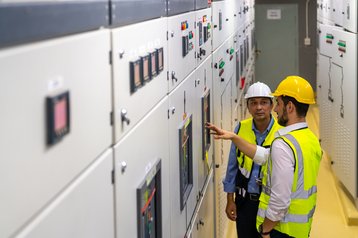There are countless common injuries that take place in the workplace every day. Between electric shocks, burns, and trip hazards, the stakes are undeniably high.
In fact, electricity causes around 4,000 workplace injuries every year - an average of 11 injuries per day. These safety incidents can devastate individuals and compromise the entire organization. They are stark reminders of the critical need for stringent safety protocols.
It’s never been more crucial for businesses to proactively look for potential risks and take the necessary measures to maintain the duty of care to employees.
Creating robust safety strategies
Safety protocols should be seen as the new business imperative – the backbone of the sustainable and ethical operation of any business. They ensure that employees are protected, legal and financial risks are minimized, and businesses run smoothly.
From a top-down approach, it is the responsibility of businesses to develop these comprehensive policies.
Safety protocol should encompass a robust set of regulations. From mandatory safety training sessions to strict adherence to industry standards, aimed at preventing accidents and health issues before they occur.
Advancing safety with innovative technologies
Leveraging innovative technologies is crucial for advancing safety measures and enhancing protective systems. Not only does this give businesses continuous oversight of operations and potential hazards, but the data that these technologies create can also be collated to spot trends and mitigate risks quickly.
Modern technologies – like AI-powered safety monitoring systems – are crucial in providing a 360 view of an organization's operations, which can help to support prevention strategies. They can empower businesses to detect hazards and make accurate risk predictions. This allows for proactive and pre-emptive action.
These systems analyze patterns and data to predict potential system failures or safety risks before they occur. This preventative approach allows for timely interventions and continuous improvements in safety protocols.
The human element
In order to ensure a genuinely comprehensive safety strategy, businesses must work alongside technology, adding an essential human touch.
By using their experience and professional judgment, facilities managers are best equipped to make nuanced decisions where automated systems may fall short. Having this human touch also allows for a broader understanding of each situation, considering factors that may not be immediately apparent to automated systems.
Regular safety audits and continuous training programs ensure that all employees are trained with the latest safety protocols and technologies in mind. It’s worth noting that many forms of training are also essential for legal compliance.
With this hands-on approach, businesses can empower their employees to action their own insights to help identify potential safety risks before they become hazardous, promoting a cycle of continuous safety improvement.
An industry responsibility
A completely safety-first culture is not just a top-down approach. It is a collective effort between all industry stakeholders: vendors, engineers, contractors, and electricians can all play a vital role in ensuring safety standards. Proactive engagement is the key to encouraging more innovative safety practices.
We all must work together to make organizational safety a priority. The best approach would be to integrate comprehensive safety policies with advanced tools to create a safety-first culture that significantly enhances workplace safety and operational reliability.
Embracing a safety culture
Ultimately, a strong safety record is a company’s most valuable asset. Prioritizing safety reduces workplace injuries and fosters a happier and more engaged workforce, enhancing company reputation.
Businesses must embrace this safety-first philosophy if they are to build a sustainable, ethical, and competitive business.






